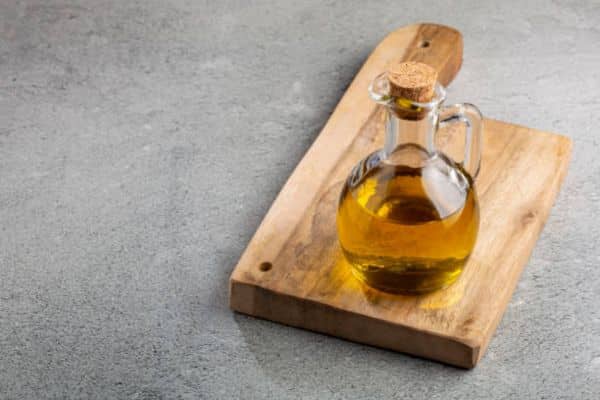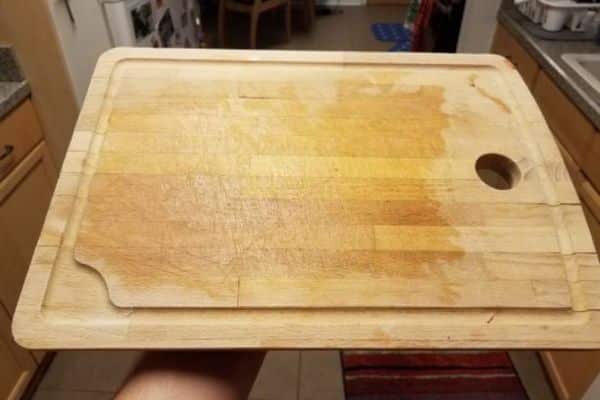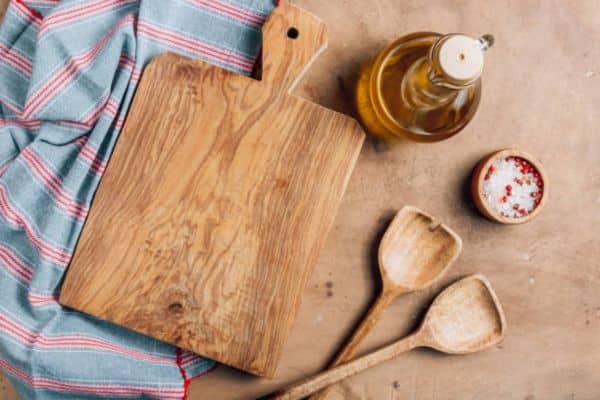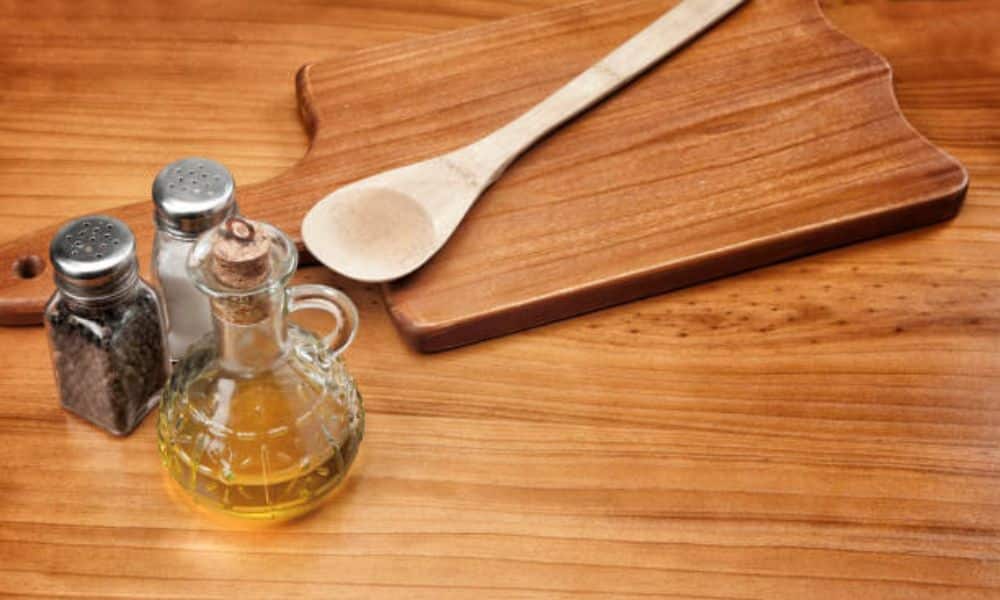Close your eyes. Hear the soft chop of a knife on maple. Feel the rhythm of prep—the start of every good meal. Ever stood in your kitchen, holding a dry board, wondering what oil to use on cutting board surfaces? You’re not alone. The right oil keeps wood strong, safe, and smooth. I found out the hard way. Years ago, I brought Grandma’s old butcher block back to life. I tested oils, watched, and waited. Some soaked too deeply. Some stayed sticky. Then came tung oil. Pure. Natural. Magic. So, is tung oil safe for cutting boards? That’s the question we’ll explore. You’ll learn what it is, how to use it, and how it compares to other oils. Let’s keep your board happy—and your food even happier.
What Is Tung Oil, Anyway?
Tung oil is made from the seeds of the tung tree. It has been used for over a thousand years to protect and seal wood. People first used it in ancient China on boats and furniture.
Here’s the short version: It is a natural oil that soaks into wood and dries hard. It makes wood last longer and look better.
The oil gives a rich, warm tone to wood. It helps keep out water and dirt. That’s why it’s great for things like cutting boards and kitchen tools.
Pure tung oil is safe and clean. It has no chemicals or fake stuff. I’ve used it on old cutting boards, and it made them feel new again.
So, Is Tung Oil Safe for Cutting Boards?

Yes, it is. Tung oil is safe for cutting boards, as long as it’s pure.
Once dry, tung oil forms a hard, sealed layer. That layer keeps out water, germs, and stains. It won’t flake or rub off. It’s food-safe, non-toxic, and long-lasting.
It is a drying oil. That means it hardens over time. It soaks into the wood, then turns solid. This protects the board from wear. Non-drying oils, like olive oil, stay soft and can go bad.
Step-by-Step: How to Use Tung Oil on Your Cutting Board

You don’t need fancy tools. Just a little time, a soft cloth, and the right oil. Follow these easy steps:
- Sand the surface
Start with clean wood. Use fine sandpaper to smooth the board. Wipe away the dust. - Wipe clean
Use a dry cloth to remove anything left on the surface. Make sure it’s dry before oiling. - Apply tung oil
Pour a small amount on the board. Rub it in with your hand or a lint-free cloth. Go with the grain. - Let it soak
Wait 30 minutes. Let the oil sink in deep. - Wipe excess
Use a clean cloth to remove extra oil. Don’t leave puddles. - Repeat for 3–5 coats
Let each coat dry for 24 hours. Do this a few times for the best results. - Let it cure for a week
Give the board time to dry fully. This is when the oil hardens and seals the wood.
Tung Oil vs. Other: What Oil to Use on Cutting Board?
Not all oils are the same. Some dry and protect. Others stay soft and go bad. Let’s look at the best options and what makes each one shine.
Tung Oil
Dries hard. Soaks deep. Lasts long. Best for: A strong, safe finish that won’t wash away. Once dry, pure l forms a tough coat. It seals the wood and brings out a rich colour. Just be sure it’s 100% pure—no additives.
Mineral Oil
Clear. Cheap. Easy to find. Best for: Quick care and regular re-oiling. It doesn’t dry, so it needs to be reapplied often. But it’s food-safe and a great first oil for beginners.
Beeswax Blends
Soft and creamy. Adds shine.
Best for: Boosting protection and moisture.
Usually mixed with mineral oil, beeswax gives a smooth feel. It helps seal in other oils and smells nice, too.
Coconut Oil
Natural and popular. But tricky. Best for: Light-use boards (not for daily chopping). Coconut oil is safe, but it can go rancid over time, especially in warm kitchens. Use only if it’s refined and the board won’t see heavy use.
Walnut Oil
Rich, natural, and soaks well. Best for: Beautiful boards—as long as no one has nut allergies. It dries like tung and feels smooth. But be cautious if anyone in the house has a nut allergy.
Quick Tips for a Long-Lasting Board

A cutting board is more than wood. It’s part of your kitchen story. With just a little care, it can last for years. Here’s how to keep it strong and smooth.
Oil it often
Rub on a light coat of oil every few weeks. Use more if the board looks dry. Wipe off the extra and let it sit overnight.
Store it right
Keep your board standing upright or on its side. Let air flow around it. A damp counter or a dark drawer can lead to mould.
Keep it out of the dishwasher
Heat and water can ruin good wood. Wash by hand with warm water and mild soap. Dry it right away with a towel.
Fix cracks fast
Got a split or dry patch? Sand the area smooth. Wipe it clean. Add oil until it stops soaking in. Repeat for a few days.
Bonus: Best Cutting Board for Brisket Lovers
Brisket is big, juicy, and deserves a board that can handle the job. So what makes the best cutting board for brisket?
Look for a juice groove
Brisket is full of flavour—and moisture. A deep juice groove keeps those tasty drips off your counter. It’s cleaner and safer, too.
Go big
Brisket needs space. Choose a board at least 18 inches wide. Bigger boards give you room to slice without a mess.
Pick the right wood
Maple and walnut are top picks. They’re strong, smooth, and easy on your knife. Both hold up well over time.
Keep it easy to clean
Stick with one solid piece or an edge-grain board. Skip plastic or bamboo for this job—they’re harder on knives and can stain fast.
Final Thoughts
Yes, it is—as long as it’s pure and fully cured. It gives your board deep care, a rich glow, and strong protection that lasts. Oiling your board doesn’t take much time. But it makes a big difference. Whether you’re slicing brisket or chopping herbs, a well-loved board makes cooking feel better. Give try. Your board will look better, feel smoother, and stay with you longer. Take care of your tools, and they’ll take care of you.


